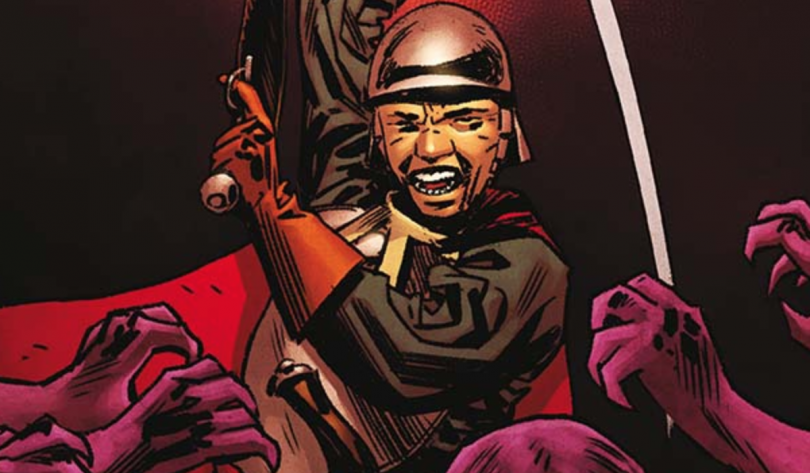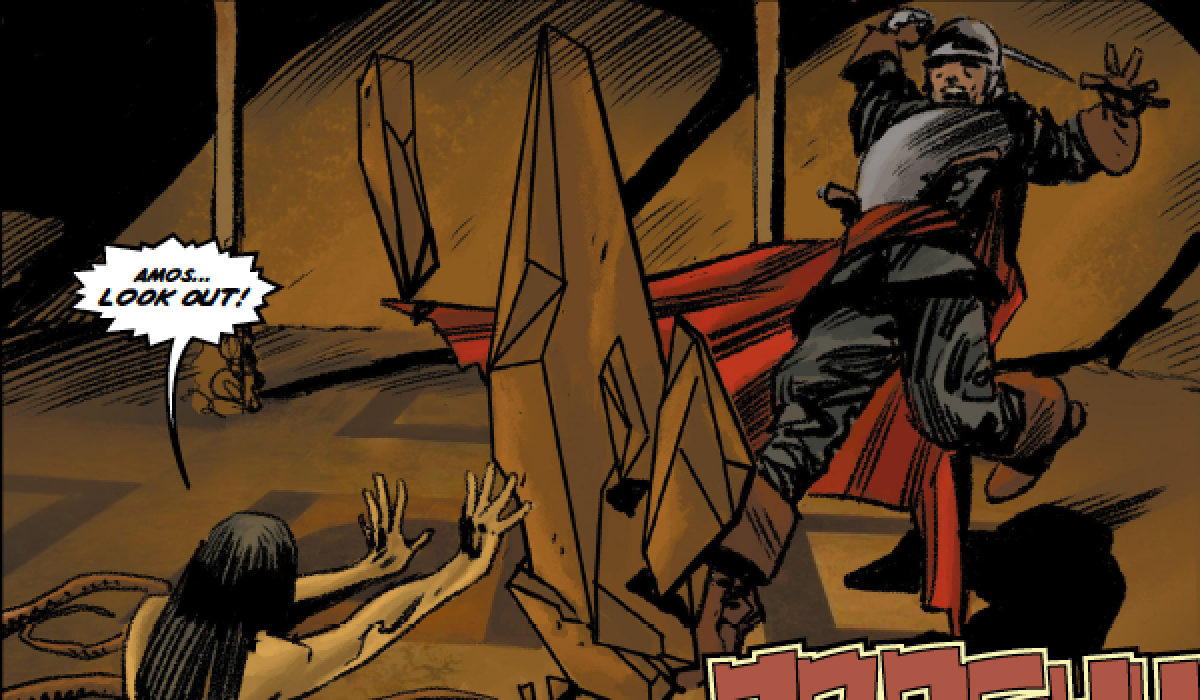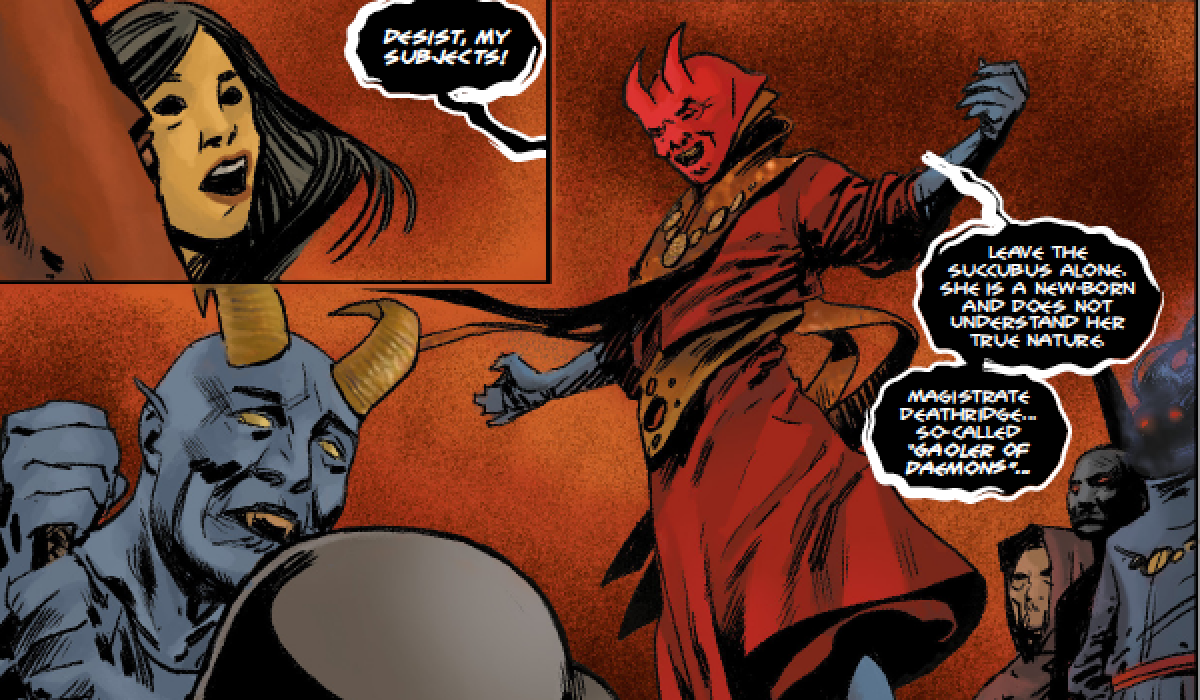The four issues of Planet of the Daemons: The Eye of Lucifer blend horror, fantasy, and historical fiction in an expansive way. Its story crosses two dimensions, magic forces, demonic powers, Puritan Massachusetts, witches, sorcerers, devils, and more. For something this intricate, the majority of its story is surprisingly and refreshingly digestible. Ultimately, Kevin Gunstone‘s Planet of the Daemons boils down to an archetypal story of a lone hero ad his solemn duty to protect the world.
Amos Deathridge, formerly a Puritan magistrate, now guards the demon jail of Sathariel, a land of monsters and demons within the magical dimension of Qlipoth. The four issues intercut how he came to discover Qlipoth (involving his family, fellow townspeople, and satanic superstition) and his perilous adventure to capture Count Eligos, a powerful demonic sorcerer. The mystery behind his companion, a succubus queen named Heinous, fuels the latter half of the story and ties together why Amos has found himself in the middle of this inter-planetary war against evil.
The setting of Qlipoth incorporates many standard elements of what one imagines a demonic world to entail. Fortunately, because of its magical nature, every element and obstacle thrown in Amos’ path works for the story and is ultimately very entertaining. The rocky landscapes and caverns are interesting backgrounds, but the labyrinth Amos, the succubus, and their blind companion Salis enter in Issue 3 is the highlight set-piece of the books. Its size is jarring and intimidating, eerily filled with those who were drawn to the power of Lucifer’s Eye but became lost forever in the maze. Amos’ Puritan village is also interesting and features the story’s best character drama. Amos’ family situation is strained by his religious devotion and that devotion itself is tested by the strange behavior of his friend, Silas. A lot of the suspicion and paranoia in these sections is very reminiscent of Arthur Miller‘s The Crucible and other works based on the Salem witch trials.
Like any fantasy world, the sheer number of names and plot details to remember about Qlipoth is huge. I found myself lost more than once in the first two issues, but eventually I found my bearing. To enjoy these comics, a reader doesn’t need to remember every name or detail and they can instead focus on the theatrical character designs and violent action. Amos’ semi-medieval warrior garb is a memorable outfit and each of the demon designs, while sometimes repetitive, are always a treat to see (with special mention for Salis, Count Eligos, and the orange succubi of later issues.)
Overall, Planet of the Daemons was an exciting read. The world-building of Qlipoth/Sathariel and the rules and norms of its magic and fantasy do not run deep, but they make for a fun read. As someone more interested in history than fantasy, I really enjoyed the inclusion of the Puritan backstory and felt that it anchored what could have otherwise been a confusing and alienating genre tale. It had just enough of what makes these kinds of stories good to be something I would definitely look through again.
You can discover more about Planet of the Daemons from Amigo Comics! Does this satanic story sound good to you? Let us know in the comments or send us your thoughts on Facebook or Twitter!



